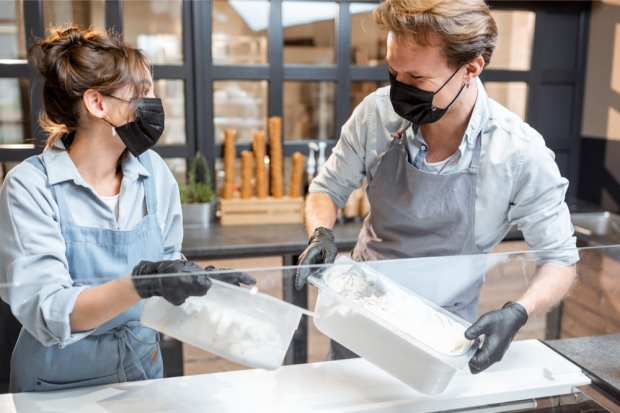Main Street’s SMBs’ Most Interesting Pandemic Pivots

Pivoting into the restaurant business might seem like an unusual choice for a small business owner trying to stay afloat during a global health pandemic. But for Hallie Kuperman, owner of Seattle’s Century Ballroom dance hall, it was just the change the times called for. Demand for dancing space has tumbled, whereas expanding the physical space of her sister business — a restaurant called the Tin Table — so that patrons could socially distance was an overnight necessity.
So with the help of a Paycheck Protection Program loan, Kuperman retooled her 23-year-old dance hall into a dining space designed to support massively distanced tables. That allows her to operate indoor dining with an absolute minimum of close contact between servers and guests, Bloomberg reported.
And while converting a dance hall into a dining hall is a rare shift, Kuperman isn’t alone among Main Street’s many COVID-19 casualties. Small and medium-sized business (SMB) owners are radically rethinking what they do and how they do it in an attempt to survive and even thrive.
PYMNTS has periodically surveyed SMBs owners since the pandemic began and found a definitive shift to digital. For example, 71.7 percent of those we surveyed reported improving or adding digital capabilities since the crisis began. And 49.4 percent reported either having improved existing online order-ahead for pickup features or adding new ones.
Our studies also showed that 50.1 percent had improved or added eCommerce portals, 47.3 percent had enhanced or added mobile wallet capabilities and 46.9 percent had done the same for digital invoicing. All in all, the data demonstrate that — true to the old expression — necessity has been the mother of invention for many Main Street businesses.
For instance, our research found that 38.3 percent of SMBs are interested in enhancing their digital offerings because many consumers are under stay-at-home mandates that prevent them from doing business through other channels. Some 37.8 percent of respondents also said they want to upgrade such capabilities because they think doing so will attract customers and generate new sales.
Moreover, it seems that at least some of this digital shift will have post-pandemic repercussions. Roughly 38 percent of SMB owners reported plans to reduce their brick-and-mortar footprints, while 23.8 percent expect to maintain their brick-and-mortar presence but reduce reliance on in-store sales.
And, as recent reports indicate, the changes afoot are bigger than just adding on digital capacity. Operationally, owners are also radically adapting their physical spaces to address safety concerns amid COVID-19.
Consider Portland, Oregon’s Pix Patisserie. Like lots of restaurateurs, owner Cheryl Wakerhauser switched to a takeout model in response to the stay-at-home orders associated with the pandemic. But Wakerhauser recently decided to add a new twist to the model: a 24-hour vending machine dubbed the “Pix-O-Matic.” It operates in the style of the Automats that were popular in the early 20th century.
“After the whole shutdown came, it just made perfect sense,” she told the Portland Oregonian.
Positioned outside the restaurant and decorated with a mirrored disco ball, the machine takes payment by card and serves up desserts, pork dumplings and novelties. (It recently offered a Ruth Bader Ginsburg face mask.) Inc. magazine reported that the machine has boosted the restaurant’s profits above pre-coronavirus levels to an extent that Wakerhauser is adding a second one.
Inc. also detailed a similar contactless approach at New York City’s Brooklyn Dumpling Shop. The store allows customers to order via an app that issues a barcode allowing customers to unlock the shop’s door and grab their orders from masked staffers.
Will such changes stick around in a post-COVID world, or will Main Street’s creative pivots fall away as our collectively memory of the pandemic fades?
We imagine some modifications won’t outlast COVID-19. But given that consumers have learned to rely on digital capabilities — and seem to actually enjoy things like Pix’s automated service so much that sales rebounded beyond pre-pandemic levels — some of these moves probably aren’t just temporary pivots. Instead, they’re likely permanent changes to the way we as consumers experience Main Street.
